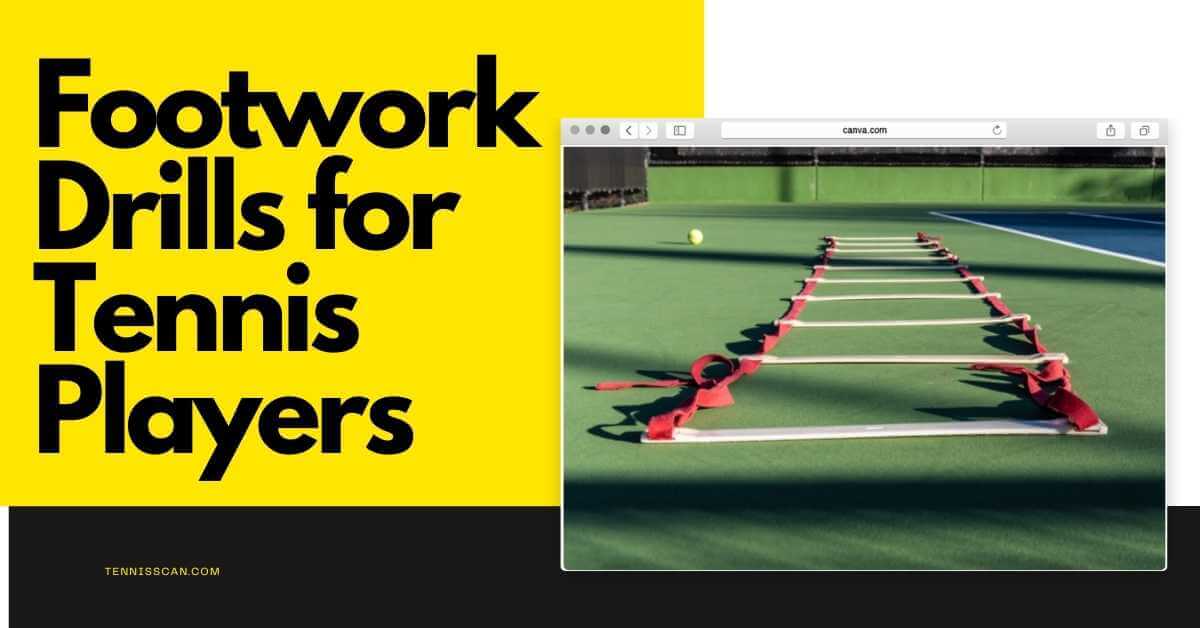Tennis beginners frequently believe that tennis talent is determined by the potential to control a racquet. If this describes you, you should reconsider your attitude. Footwork is an important part of tennis and one of the most important aspects of athletic achievement. If your footwork is bad, forget about improving it.
As a tennis player, you want a powerful body that can propel you forward quickly and with great coordination. Stretching and stamina are also very crucial. Tennis drills are quite important. Footwork drills are an excellent way to improve your game.
Footwork routines assist players to improve their flexibility and skill while also allowing them to move more efficiently on the court. Despite the fact that it isn’t their favorite sport, successful tennis players include footwork drills in their regular fitness training.
Why Tennis Drill is Important?
To improve at tennis, you should drill your strokes, but concentrating just on racquet skills is a tremendous error. Do you always stand in the same location throughout a tennis match? If you do, you should toss away your racquet and never return back to the court. To return the ball, you must keep moving around the court.
If you can’t achieve that, all of the time you’ve spent practicing your strokes will be for naught. Even if you have the best stroke game in the globe, what good are those stroke talents if you can’t keep up with the ball? If you want to improve your tennis game, you must focus on every aspect of your game, from footwork to analyzing your opponent’s movements to stroke precision.
You can forget about success if any of these are lacking in you. Even though footwork is only one aspect of tennis skill, it aids in the development of the fundamentals by increasing coordination, timing, poise, and flexibility.
Good footwork lets you fully exploit your kinetic chain, which runs from your feet to your racquet-wielding hand, to quickly cover your half of the field and accurately transmit power into the ball.
Foot Drill Steps

- Prep Step
- Split Step
- First Step
- Cross Step
- Transition Step
- Multi-Directional Step
1: Prep Step
When planning to set up for a shot, prep steps are small, regulated steps. Rather than making huge, powerful steps, it is preferable to take short, controllable quick steps that allow for improved body positioning and the capacity to change course at any time. When advancing forward to the ball or when a player has time on their groundstrokes, prep steps are typically performed.
Holding a broad leg base, staying mostly on your forefoot, knees slightly bent, and keeping a strong athletic position are the prep steps. When coming in position to hit the ball, you should execute controlled energetic little steps while holding this position.
2: Split Step
For all players, the split step is essential. It’s critical to have it up and running as soon as feasible. When commencing a natural progression, such as returning a serve or attempting to hit a groundstroke, the split step is typically used. Pushing up off your toes, jumping a few inches in the air, and dynamically advancing towards the ball is how the split step is done.
3: First Step
One of the most significant aspects of dynamic court movement in tennis is the first step. Because tennis people usually sprint more than five meters in a single direction throughout most points, a rapid first step is essential. The first step is either the one that follows the split step or the first step in any direction.
The first 2-to 3 steps are usually considered part of the first step (acceleration). We believe it is critical that you learn in the way you need to travel and take your first step with the leg nearest to the direction you are going (except in a cross-over step). The first step is as much about thinking and attitude as it is about the reality of the situation.
4: Cross Step
When going laterally, several athletes employ the crossover step to change direction. It’s a good technique to get the initial transverse movement started. Players can then perform a diagonal shuffle by crossing their outside leg over their inside leg. Players with a dynamic cross-over step will have an easier time getting into position, putting more pressure on their opponent.
5: Transition Step
Transition steps are the steps taken when changing directions on the court. These steps are crucial for getting around the court rapidly as they provide competitors more time. Multi-directional movements are used to complete transition stages.
Related to Top 10 Tennis Shoes for Hard Court You Should Check Out
The transition step is the first one taken in a multi-directional plane after a movement has concluded, such as hitting a wide forehand (diagonal, lateral, forward, or backward). When moving off in a diagonal plane, we usually refer to the transition phase (load and lean).
6: Multi-Directional Step
Almost every point played in tennis involves multi-directional steps. They’re made up of steps 1 through 5, as well as the movement between shots. Players with good multi-directional movement can maintain good posture while putting themselves in the optimum position more frequently.
Multi-directional steps that are effective boost court quickness and smooth mobility. You now know how to perform each of the six tennis footwork steps on the court.
Footwork Drill Improves at Home
If you don’t have accessibility to a tennis court, there are still certain footwork workouts that tennis players can do at home. Many of the drills specialized in tennis can’t be done in the constraints of one’s home, therefore it’s best to practice on the court. Still, if you’re stuck at home. This circuit will improve your footing while also providing fantastic endurance.
Jumping in two steps
- Place your feet together and stand tall.
- To begin, take a wide split step.
- In this wide-footed position, make a double jump.
- Repeat for 30 seconds, then take a 30-second break before moving on to the next drill.
Split Step and Hop
- Transfer your weight to your right leg.
- Take a wide split-step forward.
- Transfer your weight to your left leg.
- Return to your broad split-step stance.
- Prep for another 30 seconds.
Shuffle your sides
- Take a step to the right.
- Take a step to the left.
- Repeat for 30 seconds at a fast pace.
